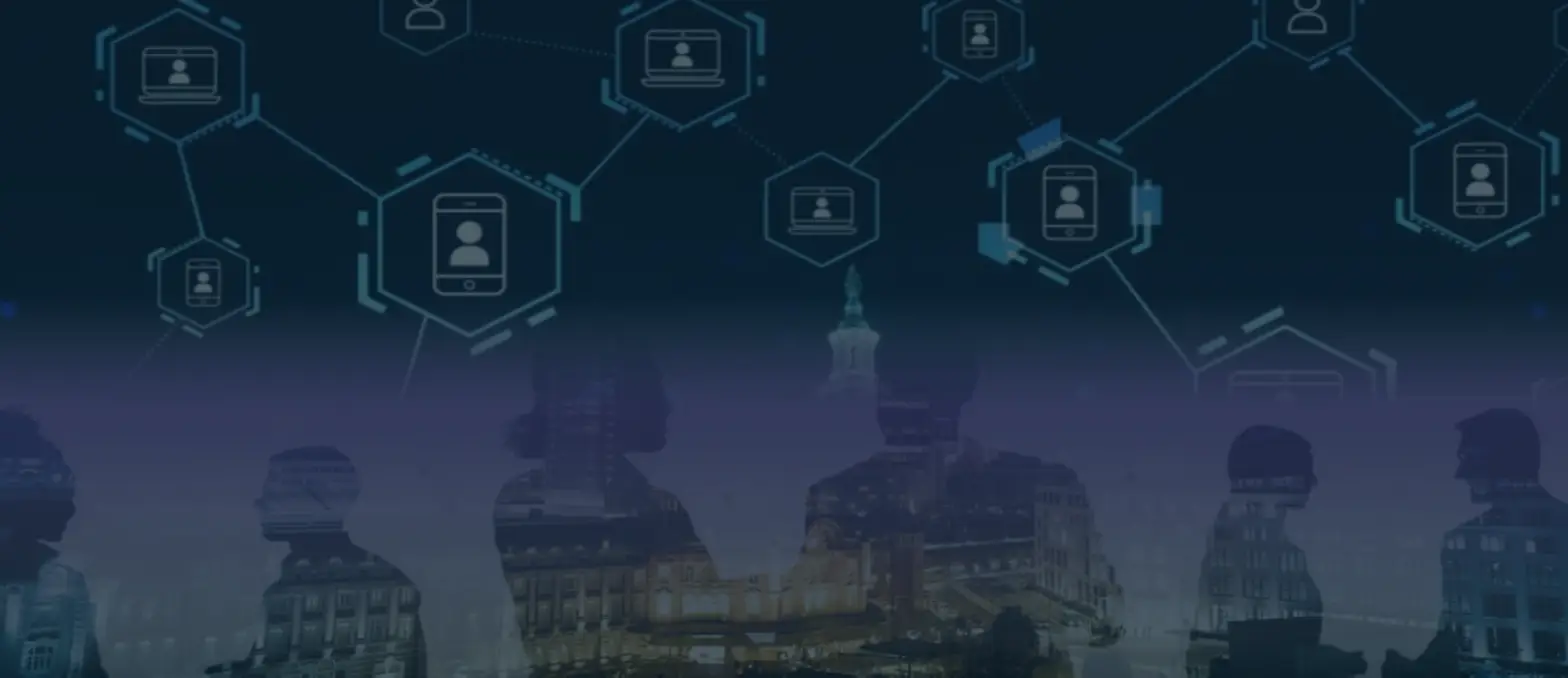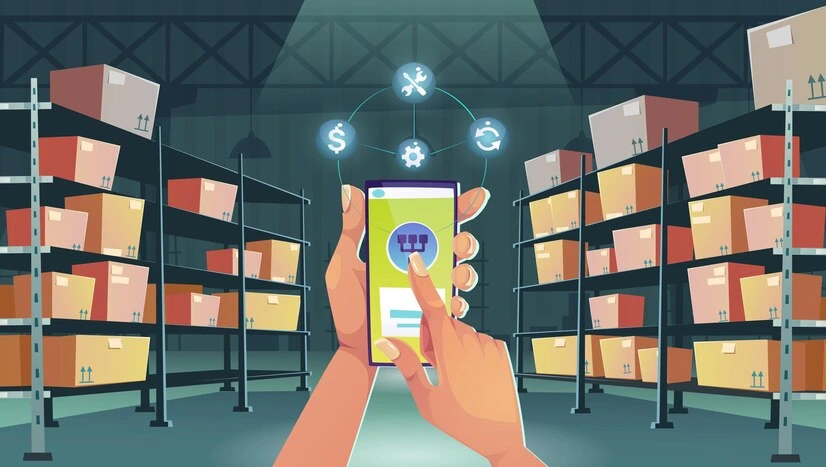It’s no overstatement to declare that in today’s world, artificial Intelligence (AI) is a major transformative force. Currently, the global AI market is worth more than USD 200 billion and is projected to grow “twentyfold” this decade. Furthermore, the worldwide market is on track for its compounding annual growth rate (CAGR) of 32.99% from 2022-2030. Unquestionably this technology field is core to how our industries innovate, progress, and scale in this fourth industrial revolution. After all, the World Economic Forum explains — following OpenAI’s release of ChatGPT — that this is the “golden age of AI”. Following the technical breakthroughs, documented capabilities, and extensive utilizations, AI technology, including applications like machine learning, is here to stay. When considering the impact on specific industries, there is no better case study than business-to-business (B2B) products. For that reason, this A3Logics blog focuses on another steadily growing B2B software vertical: human capital management software.
In this article, we’ll unpack everything businesses need to know about how AI is transforming enrollment management software leading to:
- Improved human resources (HR) compliance
- Revitalized employee engagement
- Heightened cybersecurity
- Sophisticated user experience (UX) and user interface (UI) in user flow
- Well-rounded and holistic workplaces
- Boosted benefits enrollments and remuneration fulfillment
Experience Effortless Enrollment by our Benefits Enrollment Software – Contact Us
Where is AI development for enterprise software including enrollment management products?
To begin, we’ll review the state of AI development in enterprise software. Straightaway, what is well-known is how comprehensively impactful the generative AI development of late 2022 into 2023 has been. Whether it’s ChatGPT’s overwhelming success or the release of trending products like AI-powered chatbots & voice assistants, AI’s prevalence is undeniable.
For instance, in January 2023, Microsoft, a legacy software company, invested $10 billion in OpenAI. This sizeable show of faith in the start-up’s much-lauded open-source chatbot demonstrated the rapid uptake of AI. Comparatively, in the decades before this, AI development was progressing steadily. Nevertheless, ChatGPT created what Ethan Mollick calls a “market tipping point” in Harvard Business Review.
With its high-performing, accessible, and high-quality output, the ChatGPT generative AI proved the real scope of this technology. Not only can this AI interact with humanoid responses, but also it produces critical writing and effective software coding. Consequently, this shows that businesses can turn to AI for automating core, repetitive tasks or administrative reviews. Overall the breakthroughs of the last 12 months are a historical moment for our world: organizations, governments, communities, and individuals.
Key ways businesses are using AI in their enterprise software suite
According to Forbes Advisor research, as of the first quarter of 2023, U.S. businesses are planning to use or using AI for:
- Customer service
- Cybersecurity/Fraud management
- Digital personal assistants
- Customer relationship management
- Content production
- Product recommendations
- Accounting
- Supply chain operations
- Recruitment and talent sourcing
- Audience segmentation
With these uses, what we can see is how AI helps businesses improve through:
• Streamlining processes
• Enhancing business brands
• Supporting marketing activities
• Facilitating digital transformation
• Generating leads and sales conversion
• Minimizing errors
• Saving money and human resources
• Improving workflows and time management
• Cultivating customer relationships
• Strengthening cybersecurity and data privacy infrastructure
• Elevating responsiveness and stakeholder resolutions
Outlook for AI in Enterprise Software in 2023 and 2024
Much farther back than 2022 investigative projections have declared that AI will be normalized beyond technology businesses. Correspondingly, the Economist reported Acenture’s use of AI for job application processing and Bloomberg’s use for financial analysis in 2018. Altogether, this tells us that AI is part of our future.
Especially in a post-2020 world as Economist Intelligence explains, “In all of these sectors, the pandemic has highlighted the need for a digital transformation strategy – and AI is a critical part of that process.” Therefore widespread AI use will proceed, particularly with a leading enterprise software company like Salesforce integrating AI across their products. Amidst the events of 2022 with the outbreak of war, growing inflation, and ongoing economic uncertainty, market performance became unpredictable. Despite this, the emergence of new AI technology fortifies businesses with greater capacity for resilience and adaptability transferrable to operations.
The core functionalities of enrollment management software
Now that we’ve covered the general enterprise software market, we’ll briefly revisit exactly what enrollment management software is. At present, the global core HR software market is worth over $10 billion. Currently, projections forecast that the vertical will be worth $15.1 billion by 2028. Accordingly, PR Newswire analysis explains, “ The market’s future is anticipated to be shaped by features for AI-powered recruitment and continuous learning, data security, and mobile accessibility.”
The five core operational HR capabilities of enrollment management software
- Compliance
- Training, learning, and development
- Recruitment, selection, placement, and performance management
- Compensation and employee benefits
- Workplace safety
How businesses use enrollment management software for these core HR operations
- Routine HR processes — inclusive of administration and data management
- Payroll and remuneration — inclusive of annual leave, parental leave, sick and carer’s leave, retirement (401(k)/superannuation depending on region)
- Benefits enrollment management — inclusive of health insurance enrollment and fulfillment
- Compliance — inclusive of legal and operational policies
- Hiring and recruitment — inclusive of application analysis and onboarding
- Resource management analysis — inclusive of team scheduling for short-term and long-term resource planning
- Performance management — inclusive of key performance indicators (KPIs) tracking
- Project management and collaborative tools — inclusive of third-party tool integration
- Cybersecurity — inclusive of data management and managing user authorizations
- Training and professional development — inclusive of certifications tracking and virtual training portals
Key technical features of enrollment management software
- Both onsite and cloud-based products are available — two different niches within the software vertical; cloud-based products are Software-as-a-Service (SaaS)
- Suitable for businesses of all sizes — Large and Small-Medium Enterprises (SMEs)
- In-built security functionalities — Cloud-based software is statistically more secure due to non-localized storage
- All-in-one design — Enables end-to-end process, task, and operational workflows as well as system-wide security
- Remote accessibility — Available to onsite, hybrid, and remote team members
- Data storage and analysis — Robust data systems that secure, organize, and archive business assets
- Authenticated users — Multi-factor authentication is required for all users with an automatic audit trail
All in all these functionalities and features are of comprehensive qualitative and quantitative value to businesses. Further to this, PR Newswire asserts how cloud functionalities are a feature that is driving growth in this market vertical. Emphatically, “With integrated cloud HR suites gaining popularity, businesses are reaping the benefits of streamlined HR processes, data consolidation, and real-time analytics, empowering them to make data-driven decisions for talent management and strategic planning.”
Therefore it’s important to recognize that enrollment management software facilitating sustained transformation, irrespective of AI, supports businesses to:
- Affordably set up and onboard tools with minimal outlay
- Use data insights for business growth and team management
- Offer all staff flexible work options
- Remunerate employees with attractive, accessible benefits packages
- Maintain growth according to roadmap strategy and capacity to scale seamlessly
- Adopt intelligent features like data analysis, automation, and security
10 core business areas of enrollment management software that AI transforms
Forthwith, we’ll explain how AI in HCM software makes a difference to 10 core business areas. What’s more, we’ll review why this is so important for both U.S. and global businesses in the 2020s. With the changing world and increasing HCM software adoption, businesses experience many benefits in conjunction with AI capabilities. Subsequently, post-pandemic when businesses need to improve employee experience and overcome compliance pressures in tandem, this vertical proves invaluable.
How AI in enrollment management software transforms 10 core areas of U.S. and global businesses
-
HR role capabilities
As well as other core business software, like word processing or point of sale, HCM platforms improve how HR happens. Enrollment management software helps HR complete their core responsibilities, like administration, seamlessly and efficiently. When AI is integrated, this further frees HR to focus on higher-order tasks.
For example, machine learning capabilities can be applied to HR tasks like official correspondence drafting. Rather than using templates, the AI can be trained to communicate like individual team members or in organizational style. Then this can be left to complete mass drafts of important yet labor-intensive communications. Afterward, the HR team member can review it before sending it off. Because the AI tech frees HR teams without compromising output quality, they can then focus on other significant tasks. Over time, this feeds into making a real difference to the real HR assets: people. Accordingly, HR can deliver on working with business teams — as an individual and collective — and improving organizations.
-
Organizational security
Along with economic pressure, there is a valid reason to consider cybercrime as a threat to businesses. Not only because of the risk to organizations but also because it makes individual employees and other stakeholders vulnerable, too.
AI in enrollment management software advances cybersecurity beyond the existing highly secure infrastructure. Cloud-based HCM SaaS are structurally secure as there is no central server that is attackable and breachable. When AI is integrated into security infrastructure it can automatically detect threats, evaluate risks, and flag any questionable activity. Simultaneously businesses can investigate these flagged issues and then resolve them as needed. Whether enhanced security is needed — such as instituting an automated update to credentials — this eliminates IT pressure. Equally, this also normalizes cybersecurity on a systemized level that is more sophisticated than existing standards. For instance, businesses likely already operate mandatory cybersecurity precautions and, ideally, have strong digital hygiene policies. The additional layer of AI fortifies existing systems and positions businesses to resolve problems while also conceptualizing macro improvements.
-
Recruitment and onboarding
Every business needs their highest quality resources allocated to talent recruitment and onboarding. After all, this costs businesses a sizeable amount and it qualitatively impacts every other asset — recruitment contributes to culture. To summarize, AI contributes dynamically at every stage of talent recruitment from advertising to shortlisting then hiring and onboarding. For HR and other hiring personnel AI is both a tool for practical tasks and a tool for analytical evaluation.
- Firstly, AI can be used to generate business data and needs evaluation to inform the recruiting process. For example, HR can investigate market trends for the position and competitor demands then task AI to devise job listings.
- Secondly, once the position is listed, businesses can use AI to filter applications according to further preferences. This is particularly important when businesses regularly receive high application volumes. At this point, HR does still need to be hands-on to minimize any incidental discrimination or bias in filtering. This is a non-negotiable ethical responsibility and part of compliance.
- Thirdly, with a candidate shortlist businesses can commence interviewing and then review their meeting data with AI-generated reports. Fourthly, once jobs are offered, then HR can use AI to produce offers, process candidate documents, and implement induction onboarding.
Overall AI simplifies and streamlines a considerable portion of the recruitment and onboarding segments of HR talent-acquisition tasks. In the current climate, finding and retaining the right people is more important than ever. Therefore the more resources — AI and HR personnel — available to hiring teams, then the more effective this core process is.
Revolutionize Your Onboarding Process with our Enrollment management software
-
Employee training and professional development
Following on from recruitment onboarding, every business needs to prioritize their team’s skill development, skill maintenance, and professional development. In essence, this means viewing enrollment management software as a cornerstone of both mandatory and discretionary staff care. On the one hand, all employees irrespective of their role need to be trained in how organizations work and policies. On the other hand, encouraging employees to keep training and providing onsite, easily accessible upskilling systems is a business reinvestment. Ultimately there is strong data that shows continuing supporting staff to develop, refine, and pursue skills builds organizational culture.
In practical terms then, HR systems with AI features create an even more robust and engaging space for training. For example, AI can facilitate highly realistic, accurate, and continually accessible training for all business areas: systems, safety, and privacy. Furthermore, a vibrant training culture with AI solutions like machine learning can lead to more personalized training over time. Then this encourages staff to set their own training and professional development goals. Mandatory training in particular, also supports HR with compliance and creates a safer, more secure workplace.
-
Performance insights and feedback
Understanding what’s working and what’s not working is an endlessly vital part of a healthy business. Even so, it’s missed in many circumstances due to limited resources, poor analytical infrastructure, or a neglected culture that bypasses or discourages feedback. Neither the avoidance nor the neglect approaches work when it comes to building thriving teams and businesses.
Using AI capabilities in HR areas is another way to re-invest in employees so their contributions improve. Simultaneously it also raises the odds of engagement improving as well. Because AI helps HR and managers efficiently gather then analyze performance data, their insights are highly comprehensive. All of a sudden, with a 360-degree picture of all team members, they can have productive performance conversations. AI might draw attention to achievements in one task area rather than another task area which can prompt fruitful discussion. After that, employees and HR/managers can agree on new ways to approach work tasks and KPIs. Correspondingly, AI automating employee feedback data and then analyzing this into reports offers tangible insights to HR and managers. In many teams, feedback isn’t prioritized due to concerns about privacy or poor channels. In AI-enriched HCM software, employees submit feedback then a response is provided with dynamic insights.
-
6. HR management
Despite previous discussions of HR tasks, there are even more tasks that fall under their professional responsibilities. One such area is literal human resource management through scheduling, rostering, and team organization. As shown above, there is a high volume of tasks and they are all quite dynamic. Specifically, all of these tasks dramatically impact organizational outcomes and build a harmonious culture.
At length, AI can also make a difference in these tasks that require labor, costing, and team requirements analysis. For instance, HR team members need to prepare quarterly staff schedules that take into account budgets, workloads, and projections. At the same time, managers advise team morale is low and engagement is declining. To meet business needs and revitalize teams, HR can use AI to analyze the year-on-year data. Then, with this data, they can plan a draft schedule. With this informed draft, they can meet with managers and discuss qualitative elements like staff engagement. Overall, this leverages AI capabilities around data analysis so HR can focus on caring for teams and collaborating with management.
-
Collaboration
As with HR management, it’s obvious that AI unexpectedly improves how workplaces can boost team engagement, connections, and professional satisfaction. Though the contributions tend to correspond to analytical and automation tasks, this improves understanding of team and individual needs. Hence applying AI capabilities to longstanding challenges for businesses everywhere is a formidable task.
Notwithstanding the inescapable fact that there is no silver bullet for harmonious teams, AI can simplify working relationships. In reality, businesses can target staff collaboration through third-party platform integration that facilitates project management and dynamic work styles. Moreover, this simplifies staff relationships whether they’re onsite or in a range of locations. When AI is in the mix, teams can assign administration and analytics to these tools while focusing on important tasks. Other factors such as staff in different time zones or working in different languages can also be supported. Additionally, the AI might function as an intermediary, and as with other machine learning examples, become a trained team assistant.
-
Remuneration support
This particular business area is of crucial importance as it directly impacts many key areas: compliance, engagement, and KPIs. When there is a team or even one employee who is not being appropriately and completely remunerated then this matters. For example, this contravenes industrial policy while also potentially permanently damaging business brands. Equally, this can lead to disappointed and disgruntled employees who may make devastating mistakes. Without question, staff remuneration directly shapes business success as employees are core stakeholders.
When AI is integrated with remuneration in enrollment management software, every aspect is transformed. To illustrate, the accuracy and end-to-end management encompasses payroll, annual leave, retirement funds, parental and carer’s leave, and health insurance. These remuneration packages are wide-reaching and have a long-term impact on an individual’s life. To that end, AI can manually check timesheets and staff log-ins against system activity for hourly work. Then it can cross-reference payments to employees and bundle all payroll outgoings into one automated system. With this system, financial teams can monitor correct processes while running consistent reports that flag errors and anomalies.
-
Employee health
Further to payroll, AI applications to employee remuneration can support the individual’s task of benefits enrollment. Due to the hands-on nature of this task, in this case, AI can be used as a personal assistant. For example, when an employee is participating in open enrollment for their benefits, they could use AI tools for recommendations. Whether referring to their previous enrollment data or providing a custom benefits list based on their data, AI privately assists. Compared to seeking out HR support, AI can confidentially provide accurate support that then transfers to employee health.
In like fashion, from benefits to insights, machine learning can also tailor recommendations over time. So for a year, employees could input health data then the AI could bring them well-being prompts. For instance, some organizations are integrating telehealth into their HCM software so staff can receive remote medical care. Therefore if an employee reports declining productivity or feeling unwell then healthcare can automatically be made available. Similarly, AI can schedule regular health checks or even flag when an employee needs annual leave thus encouraging a well-being culture.
-
10. Employee experience
As shown above, enrollment software can take feedback and integrate this with other employee data plus other engagement metrics. Significantly this can incrementally improve organizational culture and establish then sustain new working conditions across every team. Because employee experience is now understood to impact economic growth and business outcomes, using KPIs alone is ineffective.
When it comes to employee experience, an excellent starting point is with the personalization enabled through AI. Both through hands-on UX/UI customization and through machine learning, AI can assist staff in designing their workspace. Based on direct input and predictive suggestions, employees can approach task completion on their terms. Thus their work is more consistent with their innate aptitudes without undermining their role responsibilities. Over time, this builds a supportive culture that promotes and upholds individuality.
Furthermore can facilitate a trusting relationship between employees and managers. For instance, employees can agree to work in an individualized way while also agreeing to send productivity reports to managers. Then employees and their managers can regularly discuss progress, and concerns, and tweak AI frameworks to boost engagement and achieve objectives.
Ready to Transform HR? Contact Our Experts
Conclusion
In conclusion, AI technology in enterprise software has inarguably already revolutionized HR processes. With these irrevocable advancements, it can’t be denied that AI equips businesses to care for their employee stakeholders meaningfully. Even so, ethical application is a non-negotiable and truly crucial responsibility. Already, there has been risk analysis on the downsides of AI in HR — namely concerning hiring discrimination. Therefore businesses need to take a thorough and strategic approach to utilizing AI tech while engaging in ethical risk management. One way to manage this is to work with an expert software development company who have years of expertise. Together with A3Logics software developers, businesses can discuss and analyze their needs, concerns, and roadmap strategy options for HCM software. Above all, businesses need to approach AI-enriched enrollment management software tactically, and sourcing information from industry professionals is essential.
Frequently Asked Questions (FAQs)
What Software-as-a-Service (SaaS) features in enrollment management platforms are most beneficial?
Overall, enrollment management software is a SaaS that proves its value in multiple ways.
Key benefits of this HCM SaaS are:
- Cloud-based products
- In-built security
- Encrypted data management
- Available to small, medium, and large businesses
- Globally accessible for workers across sites and regions
- In-built user-centric functionalities like languages
Further to these benefits are the options for customization, scaling, and how businesses can manage their HR compliance obligations.
Should businesses invest in an outsourced or in-house enrollment management software solution?
Undeniably, using any form of comprehensive benefits management software is highly important. Nevertheless, depending on the industry, such as private or public, or available resources businesses may opt for in-house systems or outsourced benefits administration. When it’s analyzed, provided the software is effective in all areas and security infrastructure is robust, both options are reliable. Even so, it’s important to note that outsourced solutions, though costlier, involve expert developer input. Not only does this expertise result in comprehensive HCM software but also these developers are entirely dedicated to delivering solutions. Comparatively in-house solutions may be dependent on resources and IT team members availability.
Will enrollment management software help businesses be more profitable?
Enrollment management software is an all-in-one approach to HR systems, payroll and financial departments, compliance, training, and safety. Therefore it’s highly likely this software will lead to more productive, efficient, and consistent resource management. Moreover, due to integration options with project management, workflow, and customer relationship management (CRM) tools, businesses streamline their options. To pursue this business goal, organizations can consult with experienced benefits administration software development companies to discuss HCM software strategies and opportunities.
Is AI automatically part of enrollment management software in 2024?
As this technology continually advances, advanced AI functionalities will likely be a core part of all HCM software in 2024. What’s not always discussed is that many AI technology is already integrated into software. For example, predictive functionalities or automatic log-offs are common AI functionalities. Looking ahead, as generative AI expands into more products, businesses may find this isn’t a separate investment or add-on.












